History
 I think that over the years, we have all become used to men going off to war, and leaving their families safely at home, while they fight for the freedom and safety of people all over the world who are unknown to them. It’s a common part of war, and one that most of the time, the average person doesn’t even think about. It’s war after all, sacrifices have to be made. What we don’t always think about…until someone points out the obvious to us…is the families, and especially the children who are waiting for their parent to come home.
I think that over the years, we have all become used to men going off to war, and leaving their families safely at home, while they fight for the freedom and safety of people all over the world who are unknown to them. It’s a common part of war, and one that most of the time, the average person doesn’t even think about. It’s war after all, sacrifices have to be made. What we don’t always think about…until someone points out the obvious to us…is the families, and especially the children who are waiting for their parent to come home.
For any of us who have been away from family for an extended period of time, it’s easy to understand just how badly you can miss someone you love, but war is different. When your child moves away, you miss them, but you know you can go see them  soon. When you loved one goes off to war in a country where the fighting is heavy, and bombs are dropping everywhere…not only can you not go visit them whenever you want to, but you live with the knowledge that at any moment, they could be killed in action. And they are living with that knowledge too. It makes the time and distance seem much longer and much further than it really is.
soon. When you loved one goes off to war in a country where the fighting is heavy, and bombs are dropping everywhere…not only can you not go visit them whenever you want to, but you live with the knowledge that at any moment, they could be killed in action. And they are living with that knowledge too. It makes the time and distance seem much longer and much further than it really is.
While we might be able to fathom the pain of missing a family member, I think we find it even harder to grasp the complete and utter shocked sense of relief that these family members feel when they are reunited with their loved one again. The children are especially heart wrenching…or is it heart warming. It doesn’t really matter which it is, 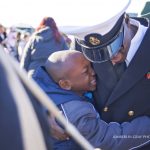 because no one watching it does so without tears. It’s just impossible. When a German World War II prisoner, was released by the Soviet Union, and is reunited with his daughter, she cannot control her emotions. She had not seen her father since she was one year old, and she is about 5 years old. A mom who spent 7 months in Iraq, cannot contain herself when she sees her daughter again. An officer’s son breaks down because he wasn’t sure he would ever see his daddy again. These are the moments most of us never got to see, but now with the internet,we have the chance to look into the lives of those who serve our nation, fight our battles, and protect our world. It is in those moments that we realize what really happens when those who serve are reunited with their loved ones again.
because no one watching it does so without tears. It’s just impossible. When a German World War II prisoner, was released by the Soviet Union, and is reunited with his daughter, she cannot control her emotions. She had not seen her father since she was one year old, and she is about 5 years old. A mom who spent 7 months in Iraq, cannot contain herself when she sees her daughter again. An officer’s son breaks down because he wasn’t sure he would ever see his daddy again. These are the moments most of us never got to see, but now with the internet,we have the chance to look into the lives of those who serve our nation, fight our battles, and protect our world. It is in those moments that we realize what really happens when those who serve are reunited with their loved ones again.
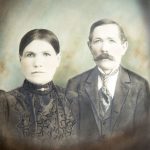 As American became populated, the immigrants brought with them, so much more than their belongings. I recently received my copy of the “Wisconsin Magazine of History” from the Wisconsin Historical Society, of which I am a member, and one of the cover stories was entitled, “German Brewing in Early Wisconsin.” Because I come from a strong German background, and was born in Wisconsin, this story was of particular interest to me. It seems that, while beer brewing in the United States began with the English, in the mid-1800s, but beer drinking was common in much of Europe, and in all levels of society, which surprised me some. We tend to expect that, higher society people would never drink beer, but the reality is that that is only in more recent years. The reality is that because on the lack of knowledge of sanitation and disease causing pathogens, many of the drinks people could make out of ordinary water really weren’t very safe to drink. Beer, on the other hand because it had to be boiled and fermented, did away with all those organisms, making it safe to drink. That made beer a very common drink by the Middle Ages. It was even given to the children.
As American became populated, the immigrants brought with them, so much more than their belongings. I recently received my copy of the “Wisconsin Magazine of History” from the Wisconsin Historical Society, of which I am a member, and one of the cover stories was entitled, “German Brewing in Early Wisconsin.” Because I come from a strong German background, and was born in Wisconsin, this story was of particular interest to me. It seems that, while beer brewing in the United States began with the English, in the mid-1800s, but beer drinking was common in much of Europe, and in all levels of society, which surprised me some. We tend to expect that, higher society people would never drink beer, but the reality is that that is only in more recent years. The reality is that because on the lack of knowledge of sanitation and disease causing pathogens, many of the drinks people could make out of ordinary water really weren’t very safe to drink. Beer, on the other hand because it had to be boiled and fermented, did away with all those organisms, making it safe to drink. That made beer a very common drink by the Middle Ages. It was even given to the children.
Upon reading this, I wondered if my German great grandparents made beer in their home. I thought about the 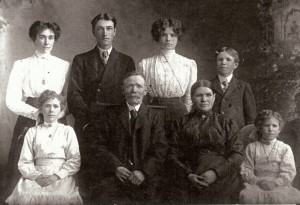 journal my Aunt Bertha Schumacher had written, but she never mentioned beer. I suppose it could have been because it was so common in the home, that it never occurred to her. Or could it have been because they were the exception to the rule, and didn’t really drink beer in their household. It’s hard to say, but when something is as much a cultural and traditional practice, it seems to me unlikely that they would not have done thing in the same way their families did at home. After studying German in high school, I knew that beer was talked about in many of the dialogues we learned. It just seemed to me, like it was a way to learn the words, and now a way of life, but perhaps I had been wrong on that. I suppose it could have been that because family meals in the United States, these days anyway, did not include beer, wine, or any other alcoholic drink of any kind, on a regular basis, was pretty much unheard of. It just didn’t seem like an normal activity, but in the time that my German great grandparents immigrated to the United States, drinking beer was very
journal my Aunt Bertha Schumacher had written, but she never mentioned beer. I suppose it could have been because it was so common in the home, that it never occurred to her. Or could it have been because they were the exception to the rule, and didn’t really drink beer in their household. It’s hard to say, but when something is as much a cultural and traditional practice, it seems to me unlikely that they would not have done thing in the same way their families did at home. After studying German in high school, I knew that beer was talked about in many of the dialogues we learned. It just seemed to me, like it was a way to learn the words, and now a way of life, but perhaps I had been wrong on that. I suppose it could have been that because family meals in the United States, these days anyway, did not include beer, wine, or any other alcoholic drink of any kind, on a regular basis, was pretty much unheard of. It just didn’t seem like an normal activity, but in the time that my German great grandparents immigrated to the United States, drinking beer was very 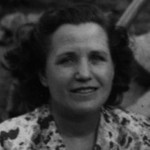 normal, so I have no reason to believe that they didn’t drink it, just like everyone else.
normal, so I have no reason to believe that they didn’t drink it, just like everyone else.
When the German immigrants arrived in America, they were required to brew their own beer. Since wheat was abundant, barley and hops easy to grow, they had no problem making their beer. I must wonder if they used whet at that time, though, because the German recipe did not include wheat, because it was needed for bread in Germany, and it wasn’t as abundant as it was in the United States. The east coast with its heat and long growing season, didn’t make a good brewing climate. When the people moved to Wisconsin, they found the climate, especially in the Milwaukee area was perfect, and I suppose the rest is history, for German beer and for Milwaukee.
 September 17, 1976 was an epic day in American history, and truly in world history as well. This was the day that the seemingly impossible became possible. Man had been in space many times by that date, but the crafts taken were disposable, and the cost to build new ones was great. It would be an amazing thing to have a craft that could take man into space, and then make a smooth landing back on Earth. It was unheard of, but it was no longer impossible.
September 17, 1976 was an epic day in American history, and truly in world history as well. This was the day that the seemingly impossible became possible. Man had been in space many times by that date, but the crafts taken were disposable, and the cost to build new ones was great. It would be an amazing thing to have a craft that could take man into space, and then make a smooth landing back on Earth. It was unheard of, but it was no longer impossible.
On this day in 1976, NASA publicly unveiled its first space shuttle. The shuttle was called Enterprise, and during a ceremony in Palmdale, California, the world got its first glimpse of the future. The Space Shuttle looked like an airplane. Its development cost almost $10 billion and took nearly a decade. The shuttle would not actually fly until 1977. Enterprise became the first space shuttle to fly freely when it was lifted to a height of 25,000 feet by a Boeing 747 airplane and then released, gliding back to Edwards Air Force Base on its own accord. It was a phenomenal accomplishment. What an exciting event in NASA history!!
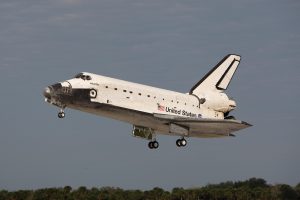
With the success of the first flight, came regular flights of the space shuttle, which began on April 12, 1981, with the launching of Columbia from Cape Canaveral, Florida. The shuttle had to be able to get into space, and so it was launched by two solid-rocket boosters and an external tank. These were ejected prior to the actual entrance into space, and only the shuttle, which looked like an actual airplane, entered into orbit around Earth. When the two-day mission was completed, the shuttle fired its engines to reduce speed and, after descending through the atmosphere, landed like a glider at California’s Air Force Base…brought to a stop with the help of three parachutes.
Early shuttles took satellite equipment into space and carried out various scientific experiments. On January 28, 1986, NASA and the space shuttle program suffered a major setback when the Challenger exploded 74 seconds after takeoff and all seven people aboard were killed. That was a horrible day in shuttle history. After changing the things that caused the problem, the shuttle flew again beginning in September 1988, when Discovery went up successfully. Since 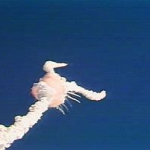 then, the space shuttle has carried out numerous important missions, such as the repair and maintenance of the Hubble Space Telescope and the construction and manning of the International Space Station. A tragedy in space again rocked the nation on February 1, 2003, when Columbia, on its 28th mission, disintegrated during re-entry of the earth’s atmosphere. All seven astronauts aboard were killed. In the aftermath, the space-shuttle program was grounded until Discovery returned to space in July 2005, amid concerns that the problems that had downed Columbia had not yet been fully solved. On July 21, 2011, Space Shuttle Atlantis touched down for the final time, at the end of STS-135, with the official retirement of NASA’s Space Shuttle fleet taking place from March to July 2011.
then, the space shuttle has carried out numerous important missions, such as the repair and maintenance of the Hubble Space Telescope and the construction and manning of the International Space Station. A tragedy in space again rocked the nation on February 1, 2003, when Columbia, on its 28th mission, disintegrated during re-entry of the earth’s atmosphere. All seven astronauts aboard were killed. In the aftermath, the space-shuttle program was grounded until Discovery returned to space in July 2005, amid concerns that the problems that had downed Columbia had not yet been fully solved. On July 21, 2011, Space Shuttle Atlantis touched down for the final time, at the end of STS-135, with the official retirement of NASA’s Space Shuttle fleet taking place from March to July 2011.
 Heroes come in many forms, but few could be said to have been as sneaky as Eugene Lazowski, who was born Eugeniusz Slawomir Lazowski, in 1913 in Poland. His bravery was combined with genius, and in the end, he saved 8,000 Polish Jews at the height of the Holocaust. Lazowski saw the horrible way the Jews were treated, and he saw a way to help. Eugene Lazowski had just finished medical school when the Nazis invaded Poland in 1939. Typhus was spreading across the country. The disease was killing an average of 750 people a day. In an attempt to contain the disease, the Nazis increased their isolation and execution of Jews. Eugene joined the Polish Red Cross, but he was forbidden by the Nazis from treating Jewish patients. Nevertheless, under the cover of darkness, he sneaked into the Jewish ghetto and took care of the people there. Lazowski’s plan took an incredible amount of intellect, not to mention bravery. His life was on the line too. Lazowski created the illusion of an epidemic of a deadly disease, playing on the deep fears of the Nazis.
Heroes come in many forms, but few could be said to have been as sneaky as Eugene Lazowski, who was born Eugeniusz Slawomir Lazowski, in 1913 in Poland. His bravery was combined with genius, and in the end, he saved 8,000 Polish Jews at the height of the Holocaust. Lazowski saw the horrible way the Jews were treated, and he saw a way to help. Eugene Lazowski had just finished medical school when the Nazis invaded Poland in 1939. Typhus was spreading across the country. The disease was killing an average of 750 people a day. In an attempt to contain the disease, the Nazis increased their isolation and execution of Jews. Eugene joined the Polish Red Cross, but he was forbidden by the Nazis from treating Jewish patients. Nevertheless, under the cover of darkness, he sneaked into the Jewish ghetto and took care of the people there. Lazowski’s plan took an incredible amount of intellect, not to mention bravery. His life was on the line too. Lazowski created the illusion of an epidemic of a deadly disease, playing on the deep fears of the Nazis.
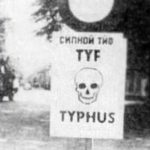 The plan came about in an unusual way. One day, a Polish soldier on leave begged Eugene and his colleague, Dr Stanislaw Matulewicz, to help him avoid returning to the warfront. I think there were many people who fought on the Nazi side of that era, who would give anything not to take part in what the Nazis were all about. Matulewicz had discovered that by injecting a healthy person with a vaccine of dead bacteria, that person would test positive for epidemic typhus without experiencing the symptoms. In an attempt to help the young solider fake a life-threatening illness, the doctors who had discovered that a dead strain of the Proteus OX19 bacteria in typhus would still lead to a positive test for the disease. Eugene realized that this could be used as a defense against the Nazis.
The plan came about in an unusual way. One day, a Polish soldier on leave begged Eugene and his colleague, Dr Stanislaw Matulewicz, to help him avoid returning to the warfront. I think there were many people who fought on the Nazi side of that era, who would give anything not to take part in what the Nazis were all about. Matulewicz had discovered that by injecting a healthy person with a vaccine of dead bacteria, that person would test positive for epidemic typhus without experiencing the symptoms. In an attempt to help the young solider fake a life-threatening illness, the doctors who had discovered that a dead strain of the Proteus OX19 bacteria in typhus would still lead to a positive test for the disease. Eugene realized that this could be used as a defense against the Nazis.
The two doctors hatched a secret plan to save about a dozen villages in the vicinity of Rozwadów and Zbydniów not only from forced labor exploitation, but also Nazi extermination. Lazowski began distributing the phony vaccine widely. Within two months, so many new (fake) cases were confirmed that Eugene successful 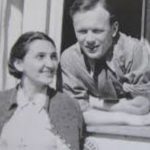 convinced his Nazi supervisors a typhus epidemic had broken out. The Nazis immediately quarantined areas with suspected typhus cases, including those with Jewish inhabitants. In 12 other villages, Eugene created safe havens for Jews through these quarantines. His work would eventually save 8,000 Jewish lives.
convinced his Nazi supervisors a typhus epidemic had broken out. The Nazis immediately quarantined areas with suspected typhus cases, including those with Jewish inhabitants. In 12 other villages, Eugene created safe havens for Jews through these quarantines. His work would eventually save 8,000 Jewish lives.
When the war ended, Eugene continued to practice medicine in Poland until he was forced to flee with his family to the United States. They settled in Chicago, where Eugene earned a medical degree from the University of Illinois. Decades later, he finally returned to Poland, where he received a hero’s welcome for saving those in desperate need of salvation through his unyielding love for humanity.
 Sometimes, an accident can be a good thing. In the late 1800s and early 1900s, ice cream prices dropped and the creamy dessert quickly became a more popular treat. Ice cream street vendors popped up across the United States and in Europe. The vendors quickly began competing over more than just flavors, but to what they put the ice cream in. You wouldn’t think it would really matter what you put the ice cream in…as long as you ended up putting it in your mouth eventually, but at that time, the container was somehow of great importance.
Sometimes, an accident can be a good thing. In the late 1800s and early 1900s, ice cream prices dropped and the creamy dessert quickly became a more popular treat. Ice cream street vendors popped up across the United States and in Europe. The vendors quickly began competing over more than just flavors, but to what they put the ice cream in. You wouldn’t think it would really matter what you put the ice cream in…as long as you ended up putting it in your mouth eventually, but at that time, the container was somehow of great importance.
Vendors tried to make their ice cream the most interesting, because after all, presentation is everything. Paper, glass, and metal were common materials used for holding ice cream. Then came the not-so-sanitary “penny licks.” Many vendors would scoop their flavor of the day into a glass and hungry buyers would pay a penny to lick the glass clean before returning it to the vendor. Not only was this not the cleanest way to eat dessert, but also customers kept breaking the glass or “accidentally” walking away with them.
The inventor of the actual ice cream cone, called a “cornet,” still remains a mystery. But, everyone agrees that the cone-shaped edible ice cream holder invention, was definitely an accident. In 1902, Antonio Valvona filed the first patent in Britain for an edible ice cream cup. The second came from Italo Marchiony, an Italian immigrant living in New York. However, these patents covered bowls, not cones. So where did the cone-shaped ice cream holder come from? Historians agree on where and when, just not who.
The 1904 World’s Fair in Saint Louis celebrated the centennial of the Louisiana Purchase, although it was one year late. There was an abundance of food, and more than 50 ice cream vendors, as well as over a dozen waffle stands. With the heat, ice cream was the top seller, but not too many people wanted hot waffles. Nevertheless, the waffles proved useful when all the ice cream vendors ran out of cups. The generally accepted 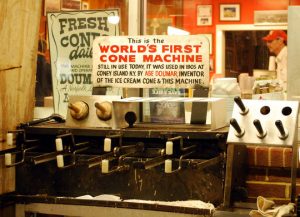 story goes likes this: “ice cream vendor Arnold Fornachou couldn’t keep up with demand and ran out of paper dishes. Ernest Hamwi, a vendor next to Mr Fornachou sold zalabia, a waffle-like pastry. Because his zalabia wasn’t selling, Mr Hamwi decided to help his neighbor by rolling up one of his waffle pastries and giving it to Fornachou who put ice cream in it. Viola, the first ice cream cone sold.” The other vendors got in on the idea as well, each claiming that it invented the idea. With all the hustle and bustle of the World’s Fair, no one really knows who invented the cone first. Many patents were filed after the fair for “waffle-rolling” machines, and many people still take the credit for this accidental invention.
story goes likes this: “ice cream vendor Arnold Fornachou couldn’t keep up with demand and ran out of paper dishes. Ernest Hamwi, a vendor next to Mr Fornachou sold zalabia, a waffle-like pastry. Because his zalabia wasn’t selling, Mr Hamwi decided to help his neighbor by rolling up one of his waffle pastries and giving it to Fornachou who put ice cream in it. Viola, the first ice cream cone sold.” The other vendors got in on the idea as well, each claiming that it invented the idea. With all the hustle and bustle of the World’s Fair, no one really knows who invented the cone first. Many patents were filed after the fair for “waffle-rolling” machines, and many people still take the credit for this accidental invention.
 When the colonists left England to form America, they were like the younger sibling, at least when it came to language and much of how they ran the country. Nevertheless, like that younger sibling, things began to change pretty quickly. Part of the change was due simply to distance. When you don’t hear a language all the time, you begin to vary in your own speech. I didn’t really realize there was such a difference between American English and British English, other than the accent of course. Still, I noticed that more and more forms were asking which of the two I spoke. I always thought that it was an odd question, because English is English…right? Well, the correct answer is…wrong!! And when I thought about it, I knew that to be true.
When the colonists left England to form America, they were like the younger sibling, at least when it came to language and much of how they ran the country. Nevertheless, like that younger sibling, things began to change pretty quickly. Part of the change was due simply to distance. When you don’t hear a language all the time, you begin to vary in your own speech. I didn’t really realize there was such a difference between American English and British English, other than the accent of course. Still, I noticed that more and more forms were asking which of the two I spoke. I always thought that it was an odd question, because English is English…right? Well, the correct answer is…wrong!! And when I thought about it, I knew that to be true.
The changes began almost immediately after the first Englishman set foot on American soil. It all started with “Americanisms.” These “Americanisms” have been created or changed from other English terms to produce a language that differs from our forefathers, signifying our uniqueness and independence. I’m sure our founders were rather pleased with themselves with this process, if they realized it at all. By the time of the first United States census, in 1790, there were four million Americans, 90% of whom were descendants of English colonists. When I think of the speed of that growth, it strikes me as phenomenal to say the least. Because of the large English background, there was no question that our official native language would be “English,” but it would not be the same as that spoken in Great Britain. “Americanism” means a word or expression that originated in the United States. The term includes outright coinages and foreign borrowings which first became “English” in the United States, as well as older terms used in new senses first given them in American usage.
In fact, by 1720, the colonists knew that we did not speak the same language as the people in England. The most obvious reason was, of course, the sheer distance from England. Nevertheless, that was not the only  reason. Over the years, many words were borrowed from the Native Americans, as well as other immigrants from France, Germany, Spain, and other countries. We had to communicate with the people around us too, and other words that became obsolete “across the pond,” continued to be utilized in the colonies. In other cases, words simply had to be created in order to explain the unfamiliar landscape, weather, animals, plants, and living conditions that these early pioneers encountered. These things might not have existed in England.
reason. Over the years, many words were borrowed from the Native Americans, as well as other immigrants from France, Germany, Spain, and other countries. We had to communicate with the people around us too, and other words that became obsolete “across the pond,” continued to be utilized in the colonies. In other cases, words simply had to be created in order to explain the unfamiliar landscape, weather, animals, plants, and living conditions that these early pioneers encountered. These things might not have existed in England.
By 1756, the English would make the first “official” reference to the “American dialect.” Samuel Johnson made note of it a year after he published his Dictionary of the English Language. Johnson’s use of the term “American dialect” was not meant to simply explain the differences, but rather, was intended as an insult. It was rather like calling our language the “low class” version of the English language. Remember if you will, that there were those who did not think the United States should ever be a sovereign nation. Years earlier…as early as 1735, the English were calling our language “barbarous,” and referred to our “Americanisms” as barbarisms. The English sneered at our language, something that continued for more than a century after the Revolutionary War, as they laughed and condemned as unnecessary, hundreds of American terms and phrases.
Our newly independent Americans, were proud of their “new” American language, wearing it, as a badge of independence. In 1789, Noah Webster wrote in his Dissertations on the English Language: “The reasons for American English being different than English English are simple: As an independent nation, our honor requires us to have a system of our own, in language as well as government.” Our leaders, including Thomas Jefferson and Benjamin Rush, agreed. It was not only good politics, it was sensible. The feelings of the “rest of the world” didn’t matter. The language changed even more during the western movement as Native American and  Spanish words became a part of our language.
Spanish words became a part of our language.
In 1923, the State of Illinois General Assembly, passed the act stating in part: “The official language of the State of Illinois shall be known hereafter as the “American” language and not as the “English” language.” A similar bill was also introduced in the U.S. House of Representatives the same year but died in committee. Now, after centuries of forming our “own” language, the English and American versions are once again beginning to blend as movies, songs, electronics, and global traveling bring the two “languages” closer together once again.
 I saw picture of the New York skyline that was taken on September 10, 2001, about 24 hours before the attacks on the World Trade Center on September 11, 2001. It was profound. The picture, taken so innocently, probably by a tourist, foretold nothing of the horror that was eminent. No one knew. No one suspected. No one thought such an attack could ever happen on American soil again, but it did, and just 24 hours after this picture was taken, we would all know that it definitely could, and did happen here again.
I saw picture of the New York skyline that was taken on September 10, 2001, about 24 hours before the attacks on the World Trade Center on September 11, 2001. It was profound. The picture, taken so innocently, probably by a tourist, foretold nothing of the horror that was eminent. No one knew. No one suspected. No one thought such an attack could ever happen on American soil again, but it did, and just 24 hours after this picture was taken, we would all know that it definitely could, and did happen here again.
Just 24 hours after this picture was taken, the lives of 2,996 people would be over (including the 19 hijackers). In addition, more than 6,000 people would be injured. These immediate deaths included 265 on the four planes (including the terrorists), 2,606 in the World Trade Center and in the surrounding area, and 125 at the Pentagon. The September 11th attacks were the deadliest terrorist attack in world history, and the most devastating foreign attack on United States soil since the attack on Pearl Harbor on December 7, 1941…the last time we had thought it could never happen here.
We could go over the deaths of the people here, but we all know the horror that took place. We wanted to close our eyes to the terrible images, and yet, in utter disbelief, we could not look away. We hoped against hope, and prayed without ceasing, that by some miracle, more people would be found alive. Still, as time went on, we knew there would be no more survivors. Nevertheless, we waited and we watched. We watched with hope, but we also watched with anger. There was no reason for such a horrible attack on our nation. We weren’t at war, and we had done nothing to hurt these attackers. Yet, somehow, in their twisted, evil minds, we had. And they reveled in the way that they had managed to secretly pull this attack off.
Now, 17 years later, with so many of our young adults almost unaware of the attacks of September 11, 2001, 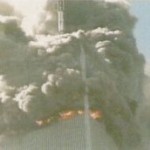
 we find ourselves in a place where many people think it could never happen here again, and yet, our world is actually more dangerous now than it was then. We must always be alert. We must never forget those attacks. Never assume that evil will leave our nation alone, if we try to be nice to it. Appeasement only makes us look vulnerable, and that opens the door to attack. It has been proven time and time again. Just like the picture of the New York skyline on September 10, 2001 seemed so serene, it held a dark secret that would only be revealed in the stark daylight of September 11.
we find ourselves in a place where many people think it could never happen here again, and yet, our world is actually more dangerous now than it was then. We must always be alert. We must never forget those attacks. Never assume that evil will leave our nation alone, if we try to be nice to it. Appeasement only makes us look vulnerable, and that opens the door to attack. It has been proven time and time again. Just like the picture of the New York skyline on September 10, 2001 seemed so serene, it held a dark secret that would only be revealed in the stark daylight of September 11.
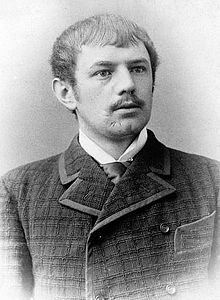 Hitler was undoubtedly one of the most horrible dictators of all time, but what prompted him to become the evil man he was. The story actually begins before Hitler was even born. In 1868, a baby named Dietrich Eckart was born in Neumarkt, Germany, on March 23, the son of a royal notary and law counselor. My guess is that he had a fairly normal childhood…at least until his mother died when he was just ten years old. That may not seem like an event that was unique to Eckart, but somehow it was different, or would become different. Eckart’s life was further complicated when his father died seventeen years later in 1895. At this point, Eckart inherited a considerable sum of money, and started to study medicine in Munich. That would be the last of his somewhat normal life. He spent his father’s money very quickly, and recklessly.
Hitler was undoubtedly one of the most horrible dictators of all time, but what prompted him to become the evil man he was. The story actually begins before Hitler was even born. In 1868, a baby named Dietrich Eckart was born in Neumarkt, Germany, on March 23, the son of a royal notary and law counselor. My guess is that he had a fairly normal childhood…at least until his mother died when he was just ten years old. That may not seem like an event that was unique to Eckart, but somehow it was different, or would become different. Eckart’s life was further complicated when his father died seventeen years later in 1895. At this point, Eckart inherited a considerable sum of money, and started to study medicine in Munich. That would be the last of his somewhat normal life. He spent his father’s money very quickly, and recklessly.
With his money gone, Eckart quit school, and began work as a poet, playwright, and journalist. He moved to Berlin in 1899, where he wrote a number of plays, often with autobiographical traits. Apparently, he was about the only one interested in his plays, because despite becoming the protegé of Graf Georg von Hülsen-Haeseler, the artistic director of the royal theaters, he never was successful as a playwright. Taking his madness one step further, he blamed his failure on society. This was the beginning of the insanity that became Dietrich Eckart. Later on, Eckart developed an ideology of a “genius higher human,” after reading earlier writings by Lanz von Liebenfels. Eckart saw himself like Arthur Schopenhauer and Angelus Silesius, and also became fascinated by Mayan beliefs, but never had much sympathy for the scientific method. That makes sense, because he seemed to want to make up his own truths. Eckart also loved and strongly identified with Henrik Ibsen’s Peer Gynt.
In 1913, when he moved back to Munich, he joined up with Rudolf von Sebottendorff’s right wing Thule Society, and became very politically active. He wrote the nationalist play “Heinrich der Hohenstaufe” (“Heinrich of the High Baptism”), in which he made the claim to world leadership for the German people, craziness that he would eventually pass along to Hitler. Soon he became the editor of the anti-semetic periodical Auf gut Deutsch. Eckart opposed the Treaty of Versailles, which he described as treasonous, and instead spread the so-called Dolchstoßlegende, which stated that the social democrats and Jews were to blame for Germany’s defeat in World War I. He was involved in the founding Deutsche Arbeiterpartei (German Workers’ Party) together with Gottfried Feder and Anton Drexler in 1919, which later on was renamed Nationalsozialistische deutsche Arbeiterpartei (National Socialist German Workers’ Party, NSDAP). He invented and published the NSDAP’s own periodical Völkischer Beobachter, and also wrote the songtext “Deutschland erwache” (Germany awake), which became the anthem of the Nazi party.
Adolf Hitler was born April 20, 1889, just a few years before Eckart’s dad’s passing. During a speech he gave before party members on August 14 1919, Eckart met Adolf Hitler. He exerted considerable influence on Hitler in the following years. Hitler looked at him as his “fatherly friend.” On November 9 1923, Eckart was involved in  the Nazi party’s failed Beer Hall Putsch,as was Hitler. They were arrested and sent to Landsberg prison along with other party officials, but he was released again soon due to illness. He died of a heart attack caused by a morphine addiction in Berchtesgaden on December 26, 1923. Hitler later dedicated the first volume of Mein Kampf to Eckart, and also named the Waldbühne in Berlin “Dietrich-Eckart-Bühne” when it was first opened for the 1936 Summer Olympics. In 1925, Eckarts unfinished essay, Der Bolschewismus von Moses bis Lenin. Zwiegespräch zwischen Hitler und mir (“Bolshevism from Moses to Lenin. Dialogues between Hitler and me”), was posthumously published, although it has been shown that it the dialogues were an invention. The essay was, in fact, written by Eckart alone. I don’t know what Hitler would have been like had e not met Eckart. My guess is that the evil ideas Hitler had were there before their meeting, but I do believe that Eckart had a great influence on Hitler,and probably helped formulate some of the evil that was to come.
the Nazi party’s failed Beer Hall Putsch,as was Hitler. They were arrested and sent to Landsberg prison along with other party officials, but he was released again soon due to illness. He died of a heart attack caused by a morphine addiction in Berchtesgaden on December 26, 1923. Hitler later dedicated the first volume of Mein Kampf to Eckart, and also named the Waldbühne in Berlin “Dietrich-Eckart-Bühne” when it was first opened for the 1936 Summer Olympics. In 1925, Eckarts unfinished essay, Der Bolschewismus von Moses bis Lenin. Zwiegespräch zwischen Hitler und mir (“Bolshevism from Moses to Lenin. Dialogues between Hitler and me”), was posthumously published, although it has been shown that it the dialogues were an invention. The essay was, in fact, written by Eckart alone. I don’t know what Hitler would have been like had e not met Eckart. My guess is that the evil ideas Hitler had were there before their meeting, but I do believe that Eckart had a great influence on Hitler,and probably helped formulate some of the evil that was to come.
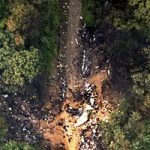 Most airplane malfunctions leave the captain and flight crew able to at least attempt a somewhat controlled crash landing, but that was not the case with USAir Flight 427. One minute, everything was going perfectly, and the next, the plane had flipped over and was plummeting toward the ground, nose first. The pilot, Captain Peter Germano had been sipping a cranberry-orange juice and Diet Sprite drink 10 minutes before the crash, and then gave the cabin a standard weather report for Pittsburgh less than three minutes before the plane went down. It was a smooth flight all the way, and there were no anticipated problems.
Most airplane malfunctions leave the captain and flight crew able to at least attempt a somewhat controlled crash landing, but that was not the case with USAir Flight 427. One minute, everything was going perfectly, and the next, the plane had flipped over and was plummeting toward the ground, nose first. The pilot, Captain Peter Germano had been sipping a cranberry-orange juice and Diet Sprite drink 10 minutes before the crash, and then gave the cabin a standard weather report for Pittsburgh less than three minutes before the plane went down. It was a smooth flight all the way, and there were no anticipated problems.
The pilots had no warning. Just 28 seconds before the crash, the pilots’ desperate exclamations are heard as the wings begin to shake and cockpit alarms sound. Germano says, “Sheez,” on the heels of three electrical clicks just before 7:03pm The Boeing 737-300 rolled to the left and dives. Germano breathes heavily and says, “Whoa,” as a thump and some clicking is heard. Another click is heard and Germano says, “Hang on.” The captain screamed and the co-pilot said, “God . . . no!” as a USAir jet spun out of control and dove about a mile nose first to the ground, killing all 132 people aboard. The flight had been completely normal until the last 28 seconds. There was no time to fix anything, and they didn’t know what to fix anyway.
“There is no indication that there was a criminal act involved in the crash,” one of the investigators said. There  was no explosion. They began to look at things like turbulence on the Boeing 737-300…to whether the pilots had been properly trained to recover from trouble in the air. Among the areas of the plane to be examined was the possibility of a rudder malfunction. USAir has warned pilots of its Boeing 737s to watch out for spontaneous rudder movements during flights. The rudder is a large vertical tail slab that moves a plane left or right.
was no explosion. They began to look at things like turbulence on the Boeing 737-300…to whether the pilots had been properly trained to recover from trouble in the air. Among the areas of the plane to be examined was the possibility of a rudder malfunction. USAir has warned pilots of its Boeing 737s to watch out for spontaneous rudder movements during flights. The rudder is a large vertical tail slab that moves a plane left or right.
After USAir Flight 427, a Boeing 737-300, crashed outside Pittsburgh on September 8, 1994, Boeing claimed the crash, which killed all 132 people on board, was caused by pilot error. The pilots’ union claimed the Boeing 737 was defective. A series of clues unearthed through meticulous detective work pointed to a problem in that prior Flight 427’s power control unit, which is a hydraulic device that controls the movement of the rudder. Investigators zeroed in on a suspicious servo valve in the power control unit. One of the manufacturers recalled a failed test, in which, for a second or two the valve stuck. The test was called thermal shock, and involved injecting hot hydraulic fluid into a valve that had been frozen to -40° to simulate the temperature in flight to the worst case scenario. At one point, the test failed, and then after the valve was adjusted, it passed. With the valve-in-a-valve system in the 737, it was expected that if the outer vale failed, the inner valve would compensate for the failure by injecting more fluid to bring the rudder back to the neutral position.
But as an analyst named Kitka studied the squiggly lines for the return flow now, he saw dips that were not 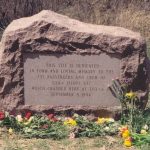 supposed to be there. When he matched them to another graph showing the force on the levers inside the PCU, he made an alarming discovery. When the outer valve had jammed, the inner valve had moved too far to compensate. That meant the rudder would not have returned to neutral, the way it was supposed to. The rudder would have reversed. That could be catastrophic, and in fact, it was. A pilot would push on the left pedal, expecting the rudder to go left, but it would go right, causing the plane to flip over and nosedive into the ground in a matter of seconds, with no possible fix on the part of the pilot and crew. There simply wasn’t enough time to fix the problem, and no way to do so anyway. Of course, the planes were grounded until they were fixed, but for the passengers and crew of USAir Flight 427, it was too late.
supposed to be there. When he matched them to another graph showing the force on the levers inside the PCU, he made an alarming discovery. When the outer valve had jammed, the inner valve had moved too far to compensate. That meant the rudder would not have returned to neutral, the way it was supposed to. The rudder would have reversed. That could be catastrophic, and in fact, it was. A pilot would push on the left pedal, expecting the rudder to go left, but it would go right, causing the plane to flip over and nosedive into the ground in a matter of seconds, with no possible fix on the part of the pilot and crew. There simply wasn’t enough time to fix the problem, and no way to do so anyway. Of course, the planes were grounded until they were fixed, but for the passengers and crew of USAir Flight 427, it was too late.
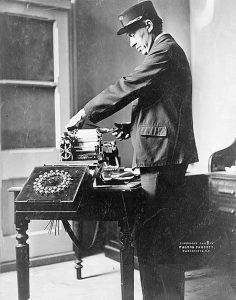 One of the more primitive forms of communication in modern times, was the telegraph. Most of us think of the wild west, and the lone operator sitting in his little office, tapping away on his little telegraph machine. We are also kind of interested in the whole thing, because he was able to write in a language the rest of us do not know, unless we are trained in Morse Code. And most of us think that with modern forms of communication, the telegraph has long been gone from history, but that isn’t so…at least not until January 27, 2006. That was the day when Western Union sent its final telegram. For many, at least for history lovers, that was a sad day. The end of another era. Gone forever.
One of the more primitive forms of communication in modern times, was the telegraph. Most of us think of the wild west, and the lone operator sitting in his little office, tapping away on his little telegraph machine. We are also kind of interested in the whole thing, because he was able to write in a language the rest of us do not know, unless we are trained in Morse Code. And most of us think that with modern forms of communication, the telegraph has long been gone from history, but that isn’t so…at least not until January 27, 2006. That was the day when Western Union sent its final telegram. For many, at least for history lovers, that was a sad day. The end of another era. Gone forever.
While it is a sad day, we must move forward. Technology was rapidly advancing, and we couldn’t drag our feet. In the time it took to prepare a message, go to the telegraph office, take care of the business of payment, have the message sent, and then wait for it to be delivered, we could have made dozens of phone calls of our cell phones. The telegraph was simply a waste of our precious time. So, after 145 years, telegrams were simply gone…no fanfare, no “retirement” party, nothing…just gone. Nothing, but a small announcement on Western Union’s  website prior to the ending. It’s like somehow, such a vital form of communication for 145 years…meant nothing at all.
website prior to the ending. It’s like somehow, such a vital form of communication for 145 years…meant nothing at all.
I’m sure that many people really don’t see why the end of the telegraph was so significant, but for me, there is a nostalgic side to it. I love history, and I am amazed at the innovation of mankind. Over the centuries many amazing inventions have come about, and many discoveries too. Humans really do have a rich history, and when apart of it is over, it is somewhat sad to me. When something that was a mainstay of our society, and just like that, it’s gone, It’s as if we have punished the technology that got us to the place we are. The telegram was just that. For many years, messages from far away…of joy and of sorrow, came to us by telegraph. And in small towns, the person delivering the message knew what it said before the receiver, because he had written it up when it came in.
We all know that Samuel Morse invented the telegraph, and then had to sell the idea, before he could get the 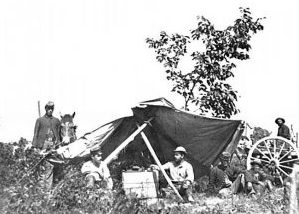 money to build what was only a dream in his head before that. Nevertheless, after showing what his machine could do, Samuel Morse was given $30,000 to build his line. The dream became a reality that would continue for 145 years. More than a year later, the first message was sent on May 24, 1844 and the country was convinced. In a partnership with several other men, Morse began the building of more and more lines, expanding the availability of the new-fangled invention. Eventually, they even had field telegraph office. I’m sure it all seemed impossible, but once Morse proved his machine, everyone was on board…at least until the next new thing came alone. That’s typical, but for the telegraph, the next big thing was a ways down the road.
money to build what was only a dream in his head before that. Nevertheless, after showing what his machine could do, Samuel Morse was given $30,000 to build his line. The dream became a reality that would continue for 145 years. More than a year later, the first message was sent on May 24, 1844 and the country was convinced. In a partnership with several other men, Morse began the building of more and more lines, expanding the availability of the new-fangled invention. Eventually, they even had field telegraph office. I’m sure it all seemed impossible, but once Morse proved his machine, everyone was on board…at least until the next new thing came alone. That’s typical, but for the telegraph, the next big thing was a ways down the road.

